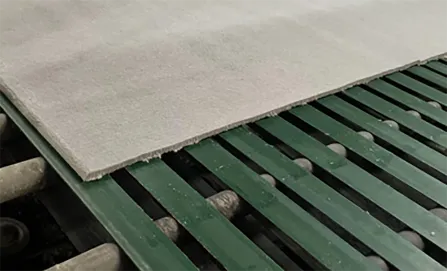- Afrikaans
- Albanian
- Amharic
- Arabic
- Armenian
- Azerbaijani
- Basque
- Belarusian
- Bengali
- Bosnian
- Bulgarian
- Catalan
- Cebuano
- Corsican
- Croatian
- Czech
- Danish
- Dutch
- English
- Esperanto
- Estonian
- French
- German
- Greek
- Hindi
- Indonesian
- irish
- Italian
- Japanese
- Korean
- Lao
- Malay
- Myanmar
- Norwegian
- Norwegian
- Polish
- Portuguese
- Romanian
- Russian
- Serbian
- Spanish
- Swedish
- Thai
- Turkish
- Ukrainian
- Uzbek
- Vietnamese
Okt . 22, 2024 13:40 Back to list
Ceiling Access Panel Solutions for Easy Maintenance and Convenient Access
The Importance of Ceiling Access Doors in Modern Construction
In the world of construction and architecture, every component plays a crucial role in ensuring safety, functionality, and aesthetics. One often-overlooked element is the ceiling access door. While they may seem simple and unassuming, these doors are vital for various reasons in both residential and commercial buildings. This article explores the significance of ceiling access doors, their benefits, and best practices for installation.
What is a Ceiling Access Door?
A ceiling access door is a panel integrated into the ceiling structure that provides access to the space above, typically referred to as the plenum or attic. These doors are designed for maintenance, inspection, and repair of systems like HVAC (heating, ventilation, and air conditioning), electrical wiring, plumbing, and insulation. Ceiling access doors can be made of various materials, including metal, plastic, or composite, and come in various sizes to accommodate different access needs.
Benefits of Ceiling Access Doors
1. Maintenance and Inspection One of the primary functions of a ceiling access door is to facilitate easy access to hidden systems. Regular maintenance is crucial for systems like HVAC, where blockages or faults can lead to inefficiency or failure. An access door allows technicians to inspect, clean, or repair these systems without extensive damage to the ceiling or surrounding areas.
2. Safety Access doors improve safety by ensuring that potential hazards in the ceiling space can be identified and addressed promptly. For instance, mold growth, pest infestations, or structural issues can pose risks. An access door allows for regular inspections, reducing long-term safety hazards for occupants.
3. Energy Efficiency With the rising costs of energy, efficiency is paramount. An access door enables service personnel to quickly reach and service insulation materials or HVAC components that can impact energy consumption. By ensuring these systems operate efficiently, homeowners and businesses can save on energy bills.
4. Aesthetic Flexibility Modern ceiling access doors come in various designs that can blend seamlessly with the existing décor. Whether it’s a commercial space that requires a functional yet professional look or a home that needs to maintain its aesthetic appeal, there are access door options available that can enhance the overall look of a space.
5. Code Compliance Many local building codes require the installation of access doors in specific locations for safety and maintenance reasons. Compliance with these codes not only ensures that the building meets legal standards but also protects the owner from potential liabilities related to neglecting maintenance.
ceiling access door

Best Practices for Installation
When installing a ceiling access door, following best practices is essential to ensure safety and functionality. Here are several key considerations
- Location Choose a location that provides easy access to the systems needing maintenance without obstructing other elements in the ceiling space. Ideally, it should be positioned where it is needed most, like above HVAC units or plumbing systems.
- Size and Dimensions The access door should be appropriately sized to allow easy passage for tools and personnel. It’s vital to consider the largest component that may need to be removed for maintenance when selecting the door size.
- Material Selection Depending on the building's requirements and the environment of the ceiling space, select materials that provide durability and insulation properties. Metal doors are often used in commercial spaces due to their durability, while lighter materials may suffice for residential applications.
- Sealing and Insulation An access door should ideally be fitted with seals to prevent air leaks that can affect energy efficiency. Insulating the door itself can also help regulate temperatures and facilitate energy conservation.
- Professional Installation If in doubt, hiring professionals for the installation can ensure that the door is fitted correctly and meets all necessary codes and regulations.
Conclusion
Ceiling access doors are a fundamental element of modern construction that should not be underestimated. They enhance safety, facilitate maintenance, and contribute to overall energy efficiency while allowing for aesthetic considerations. As buildings become increasingly complex and the demand for effective maintenance solutions grows, the importance of ceiling access doors will continue to rise. Investing in quality access doors and adhering to best installation practices can ultimately lead to substantial long-term benefits for both residential and commercial properties.
-
Transform Interiors with PVC Gypsum Ceiling: A Stylish, Durable, and Moisture-Resistant SolutionNewsMay.19,2025
-
The Smart Interior Upgrade: Discover the Durability and Versatility of Gypsum Ceiling Access Panel SolutionsNewsMay.19,2025
-
The Smart Choice for Interior Design: Discover the Value of PVC Gypsum Ceiling SolutionsNewsMay.19,2025
-
Mineral Fiber Ceiling Tiles: The Smart Blend of Performance and AestheticsNewsMay.19,2025
-
Mineral Fiber Ceiling Tiles: The Superior Choice Over Gypsum for Sound and Fire SafetyNewsMay.19,2025
-
Mineral Fiber Ceiling Tiles: Eco-Friendly Strength and Style for Every CeilingNewsMay.19,2025







